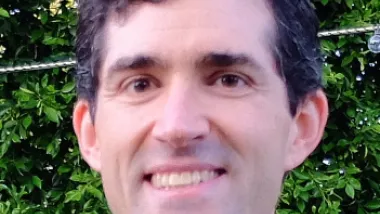Engineering superstar, serial entrepreneur, and adoptive Californian Elon Musk recently wondered aloud about building a network of tunnels underneath Los Angeles. It would "carry cars, bikes & pedestrians,” according to a Musk
tweet in a "
3-D network." Apparently Musk got the idea while he was sitting in traffic, which he, along with 15 million other Angelenos,
describes as "soul-destroying." While most Angelenos just feel their blood pressure rise, I suppose super-engineers feel a little more empowered.
These tunnels would rely on not one but two new technologies that Musk envisions. The first is his already popular Hyperloop concept, in which magnetic propulsion marries vacuum tubes to create insane speeds at low costs. The other is what Musk slyly calls the "The Boring Co.," with which Musk is supposedly devising a cheaper and faster way of digging tunnels. As most infrastructure nerds know, the current method, involving mechanical worms the size of overturned rocket ships, is painfully slow. Real worms could probably do the job faster than the German-designed machinery we usually use.
He’ll probably succeed. Musk is good at technology, and he has an admirable combination of optimism and genius. Amazingly, the Boring Co. already has a cute lot and a prototype, which is indeed smaller than its conventional counterpart, and he apparently has
dug several hundred feet of tunnel already on the site of his Hawthorne facility. You may want to hope that it doesn’t go under your house since Musk apparently said, "we have no idea what we’re doing." Nonetheless, he has fans in the public sector, who probably see little harm in
genuflecting to one of the state’s most important industrialists, and he may very well pull this off.
How these tunnels would actually coalesce into a transportation network is beyond me. I don’t care how inexpensive the construction is and how fast the pods (or whatever) travel. In every city, people are moving every which way, from a million points to a million other points, all the time. Unless Musk proposes a subterranean network that exactly mirrors the street network above it — which, if you ask me, sounds like a short story co-written by Isaac Asimov and Jorge Luis Borges — then Musk’s exciting tunnels don’t amount to much more than holes in the ground.
If the network was limited, like, say, a subway, what routes would the tunnels follow? And if it works well and attracts, say, millions of users, what happens when the tunnels get congested. I don’t care how fast the pods travel, if there’s more demand than the tubes can handle. Likewise, tunnels, aerial structures, or at-grade tubes
still need rights of way, no matter how fast they go.
Of course, Musk admits, via Tweet, "permits harder than technology." Yeah, no kidding. That’s what happens when you want to a) use public right of way; b) get
easements under private property; and c) propose a project that, if designed poorly, could kill probably thousands of people if the roof collapses or someone forgets to tap the brakes.
As I’ve previously written, this inconvenient disconnect between technology and reality is exactly the problem that plagues the mythical intercity version of Hyperloop. Hyperloop isn’t necessarily a bad technology. But it solves only a part of the problem—and it’s not necessarily the most difficult part, even with conventional, non-Muskian technology.
If Musk really has a better way to tunnel, he should develop it and rent it out to all the folks who are already building futuristic subterranean transportation networks. They’re called subways. First, of course, he has to design it, prototype it, test it, get it approved for use in the public right of way, insure it, price it, and bid on projects. This isn’t an app that you can just launch into the Cloud. It’s not even a rocket that launches into space, disintegrating if it blows up.
Unless we follow China’s lead and say hell with safety and hell with democracy, what California—and every other state—needs is not another battle between a disruptive technology and a plodding bureaucracy. Adversarial attitudes go only so far. What we need, especially if we talking about infrastructure like HyperBore (or whatever) and not, say, individual automobiles like Teslas, is cooperation, not implicit derision.
Yes, Musk might not like the wasted time, inefficient planning and procurement methods, and limitless regulations that democracy requires. But relying on a fanciful technology is not the only way to address them. The way to address them is to do so directly: Musk should use his intellect, star power, and political pull to envision and lobby for better regulations and more efficient systems. He can do this at the same time that he cooks up the next flux capacitor.
In a larger sense, Musk represents a paradox of California, and his bewilderment is legitimate. This state has some of the greatest technical minds in the world, with the most awe-inspiring tech-based economy in the world. In the ten years that the iPhone was launched and redesigned ten times, the California Environmental Quality Act has sat there like a rotary phone.
I’m not sure what this means for Musk. He’s pretty busy these days. And he’s doing genuinely valuable work. His batteries might very well help jurisdictions achieve their greenhouse gas goals. What his tunneling scheme really means is that regulators, activists, and planners who live in the
land use world—sitting in bureaucratic traffic every day, as it were—need to become a little more like Musk. More nimble. More imaginative. More optimistic.
At least, I hope they will. I would do anything not to have to hear any more puns about how "boring" infrastructure can be.





































